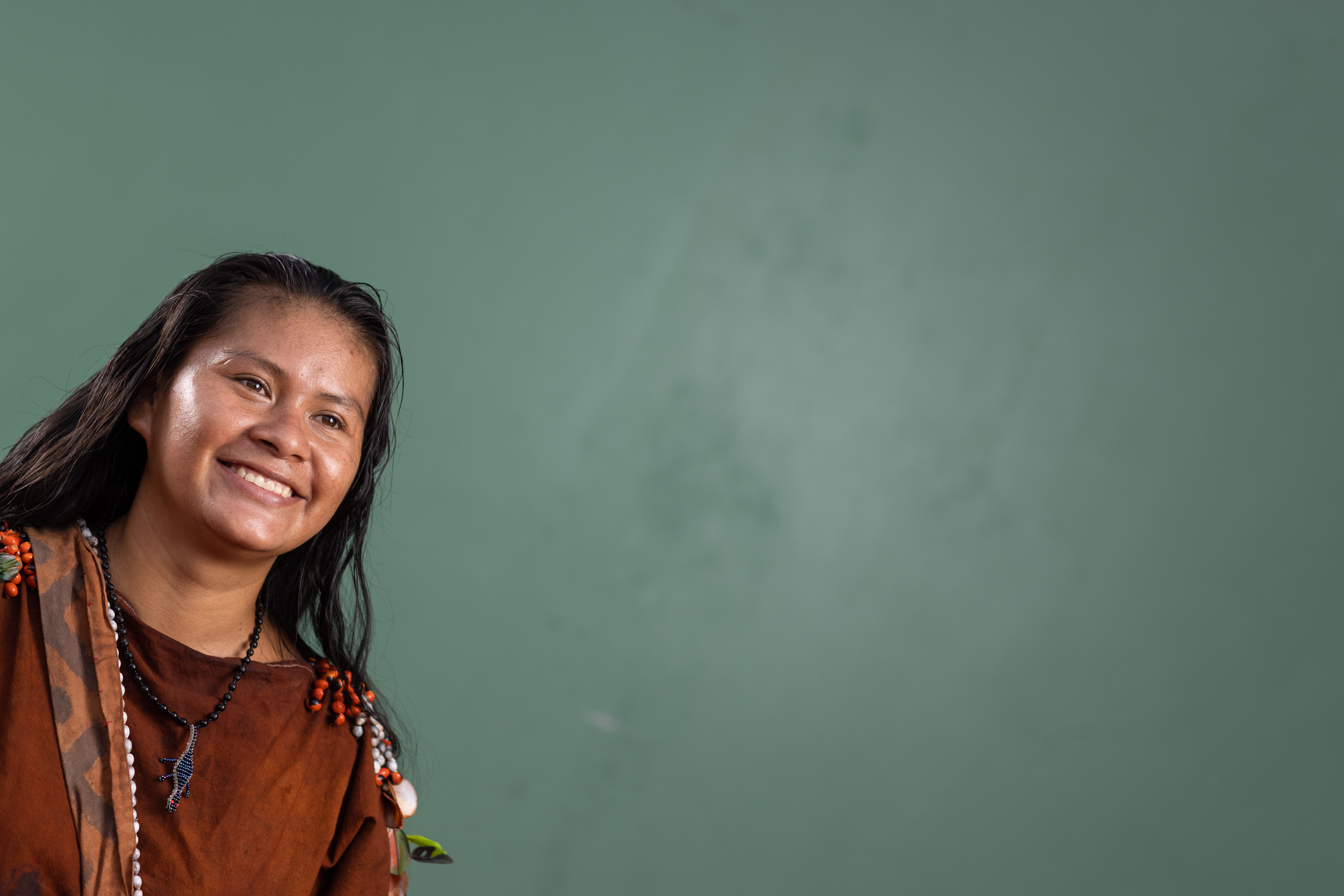Patricia Alania Campari is deputy chief of her native community, Las Golondrinas, located in the region of Huánuco, in the central Peruvian Amazon Andes. She is also treasurer of an indigenous Reserve ECOSIRA. Her community has signed a conservation agreement with the National Association of Administrators of Peru’s Communal Reserves (ANECAP), and Conservation International to strengthen the organizational and productive capacities of Ashaninka women of her community.

The story of the native community of Las Golondrinas, or swallows in Spanish, like the bird species from which it takes its name, is characterized by migration. This settlement, began to grow as a consequence of the flight of former Ashaninka settlements due to internal territorial conflicts. As a result, the very birth of the community was forced and violent.
"My grandparents came from Ucayali. Then they went north to Puerto Bermúdez, then to Puerto Inca. My grandmother told me that before, because of violent confrontations between Ashaninka, they used to kill the fathers and mothers," recalls Patricia, whose family was the founder of the community she now leads.
The conflicts caused fear in the Ashaninka families of recognizing themselves as indigenous, she goes on. "I grew up with my mother and my family, but they never told me where I came from, they never told me if I was Ashaninka. We were even ashamed to be seen by others. It was only in 2015, when the bilingual teachers arrived, that I realized that I was part of an indigenous group", the leader revealed.
Despite the fear, her mother had not lost her indigenous roots. "My mother made cushmas, brooms, baskets, and grew native vegetables. We didn't buy pills for health, when we were sick we cured ourselves with natural medicine. She also told us stories about our people," says Patricia Campari.
Although Patricia became aware of her Ashaninka identity at the age of 15, from that moment on she was committed to recover and reinforce her indigenous identity in her community, not only out of love for her culture, but also to find new ways to provide economic income for local families, especially for women. She saw from an early age how families trained men in work skills, while women were kept on the sidelines in domestic chores, and she wants change.
Las Golondrinas: between art and tourism
Thanks to the leadership of Patricia and her mother, art, clothing, and tourism associations have been established in their community to foster economic activities rooted in Ashaninka culture.
"My mother is Mrs. Livia Campari Cabello. She is 49 years old and she leads a handicraft business where women weave by hand”, says Patricia, who took on her mother’s enterprise to make it grow little by little. She raised small funds from various public and private institutions and managed to get a pedal-powered sewing machine and fabrics, but there is still a long way to go.
“We wanted to make looms and our ancestral clothes. But they only gave us the sewing machine and didn’t train us how to use it”, says the leader. The association of craftswomen is called, Working Ahsaninka Women, and is now recognized by the Peruvian state, thanks to her.
There is also a tourism association in her community, of which Patricia Campari is the secretary. Despite having registered the association, it lacks funding. Yet, Patricia is optimistic and gets excited about the prospects as she describes its potential; "There are waterfalls, ancient rock carvings, and wildlife sighting spots where you can see the blue crested great curassow (Crax rubra) among many other animals. But we need funding for a proper road; a big hotel; also, a restaurant, because tourists want special meals; we must clean, fix and signpost everything. And training to deal with tourists professionally ", she explains, with commitment in her eyes.
The conservation agreement
Patricia’s plans for her community’s future, are in action. She has ensured that her community sign a conservation agreement with the National Association of Administrators of Peru’s Communal Reserves, (ANECAP), and she is very proud.

She wants more sewing machines to meet the demand for production and improve the income of the artisan women. They also need to acquire a special machine for their bio-jewellery with which to punch holes in the natural seeds, to avoid getting hurt, as they usually do when they do it manually.
"With the conservation agreement we are considering implementing more sewing equipment and more training and capacity building for women leaders. In our communities it is difficult to get information on women's rights. We need to improve our knowledge because there are men who believe that women are only good for the house, but we are all equal. Women and men have hands," Patricia emphasizes.
The leader's goal is to position the Ashaninka culture in the minds of Peruvians and the world. For the time being, 8 women are active in the association. Patricia is committed to leaving a better world for the new generations, "Maybe in five years' time, women of my community will excel and have more opportunities, despite the men who discriminate against them", concludes Campari.
Amazon Indigenous Women's Program
Patricia is one of the fellows of the Amazon Indigenous Women's Program, which seeks to strengthen the leadership of Amazon indigenous women through the development of skills, creating spaces for exchange and dialogue, and promoting networks that consolidate conservation and improve living standards in local communities.